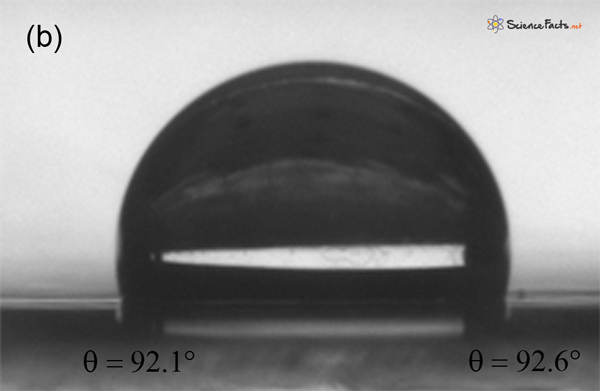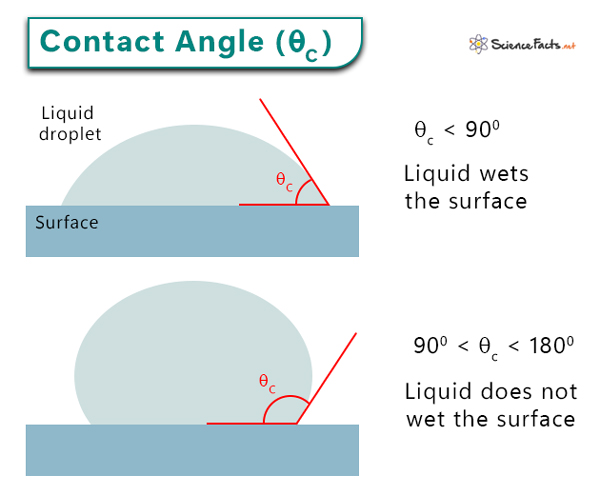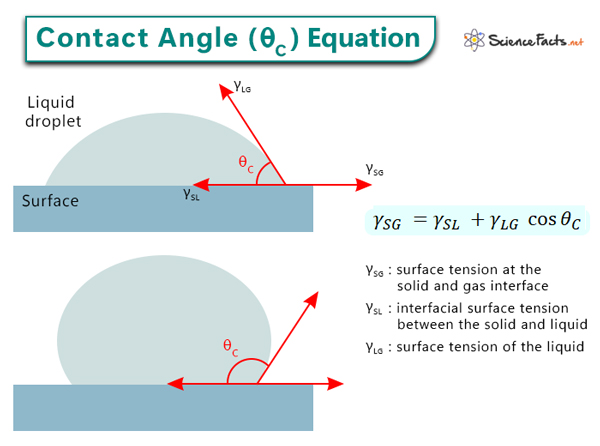Principle
Balanced Force Equation
Factors Affecting Contact Angle
How to Measure Contact Angle
Applications
When the contact angle is small, cohesive forces are weaker than adhesive forces. The liquid molecules interact more with the solid molecules than with themselves. The droplet spreads across the surface. For example, water spreads over a glass.When the contact angle is large, cohesive forces are stronger than adhesive forces. The liquid molecules interact more with each other than with the solid molecules. The droplet beads up and does not wet the surface. For example, water forms round droplets on a lotus leaf. Mercury forms droplets when deposited over glass or metal.
Surfaces that attract water are hydrophobic surfaces (for example, glass). Surfaces not attracting water are known as hydrophilic surfaces (for example, lotus leaves). Mathematically, Young’s equation is expressed as follows: γSG = γSL + γLG ˑ cos θC Where θC is the contact angle γSG is the surface tension at the solid and the gas interface. It is also the free surface energy of the solid and measures how strongly the solid molecules attract each other. γSL is the interfacial surface tension between the solid and the liquid. γLG is the liquid’s surface tension. It is also the free surface energy of the liquid and expresses how strongly the liquid molecules attract each other. Rearranging the equation, we get cos θC = (γSG – γSL)/γLG This equation provides some helpful information:
If γSG > γSL, cos θC is positive and θC < 90°. The droplet wets the surface. It occurs with a high surface energy solid such as a metal or a low surface tension liquid such as acetone.If γSG < γSL, cos θC is negative and 90° < θC < 180°. The droplet does not wet the surface and beads up. It occurs with a low surface energy solid such as polystyrene or a high surface tension liquid such as mercury.
Young’s equation establishes that contact angles and surface energies or surface tensions strongly connect to adhesion. By examining the behavior of a liquid droplet on a solid surface, researchers can leverage the relationship between this observation and the surface energy of the solid.


